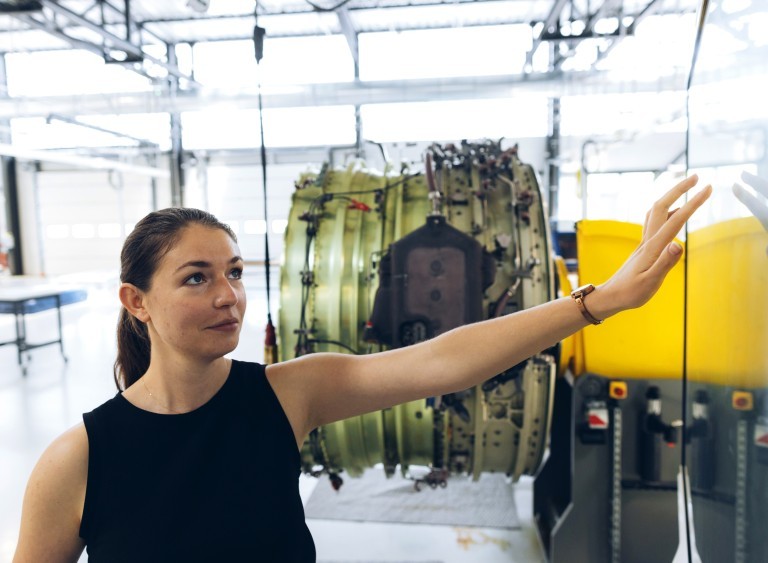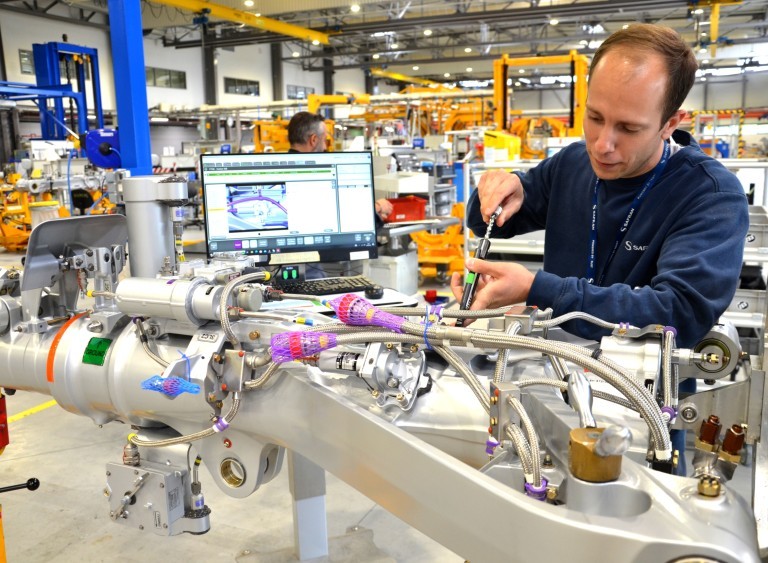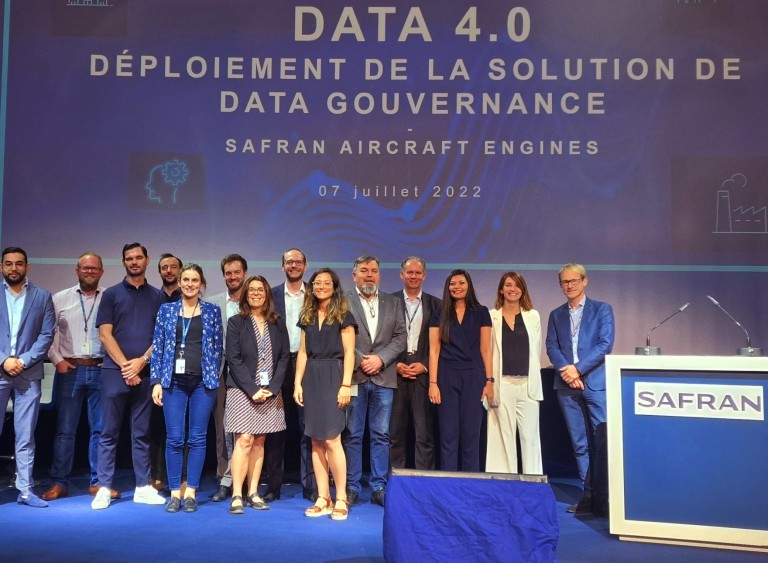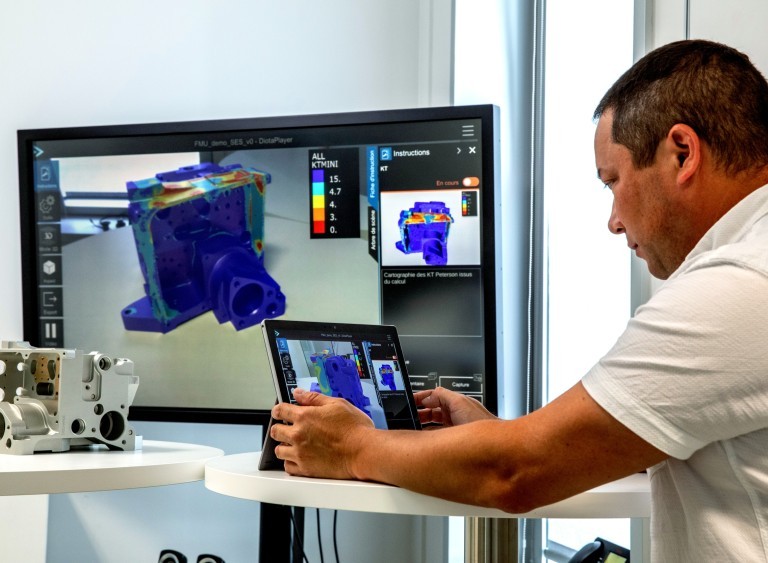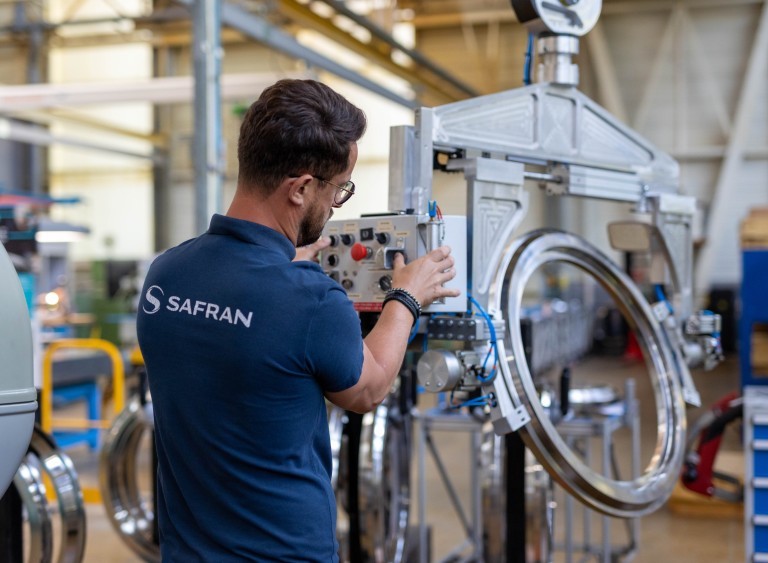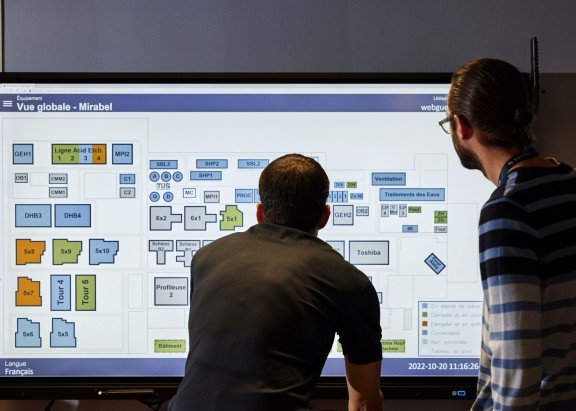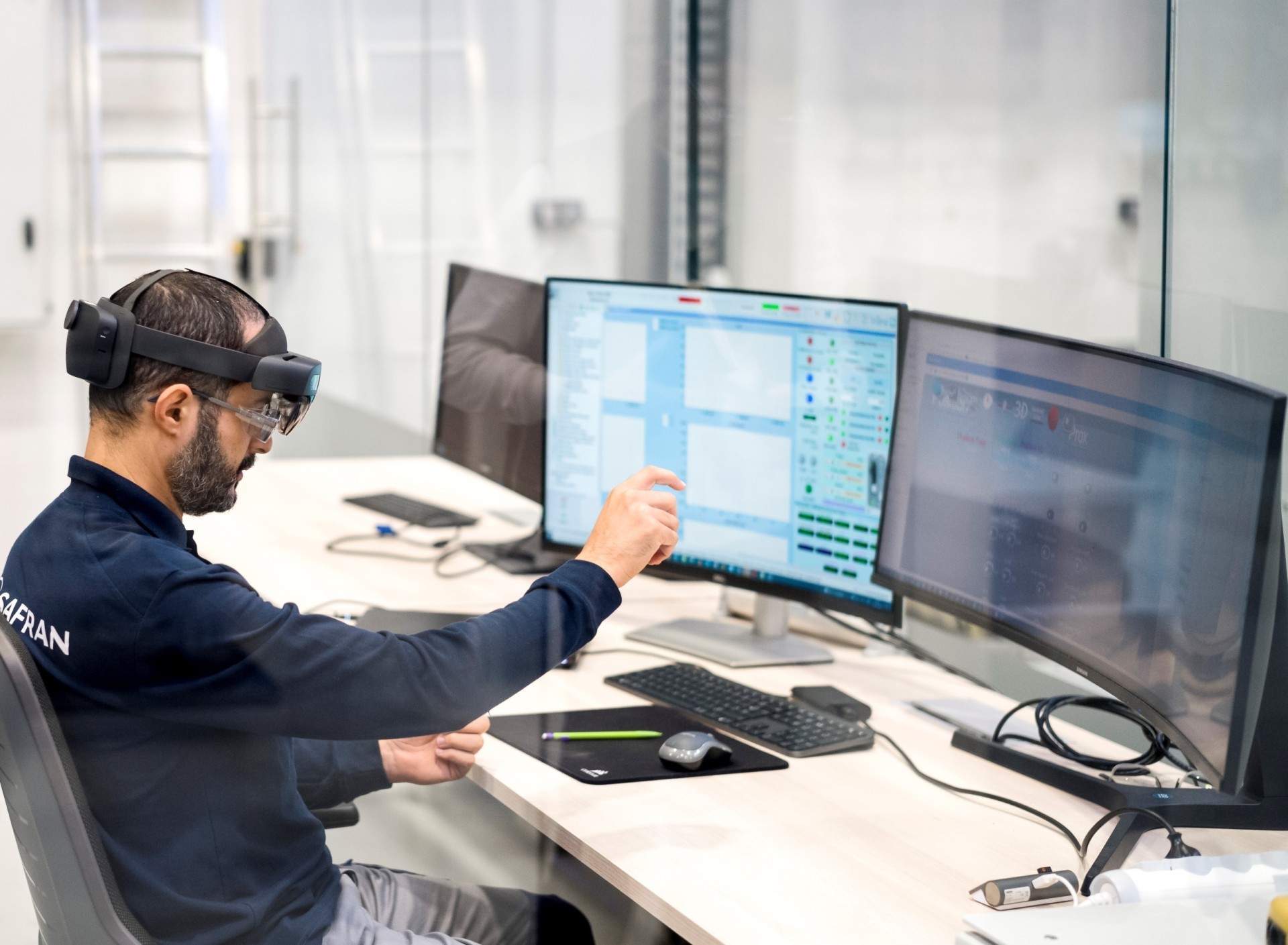
Diagnostic 4.0 paves the way for digital transformation on the shopfloor
From connectivity to augmented reality and cobots, digital technologies are revolutionizing our factories. To help us choose the right levers and maximize the gains on our hundreds of production lines, Safran has developed the Diagnostic 4.0 methodology.
- Perspective
- At a glance
- Discovery
Diagnostic 4.0 is a method that lets us analyze and identify the best conventional solutions, then digital solutions, to meet our operational objectives, while assessing needs in terms of digital data continuity. Developed by Safran, it applies to all Group products and industrial operations (manufacturing, assembly, repairs, etc.). In conjunction with Lean, it provides a comprehensive analysis of an industrial process. Improvements can then be proposed aimed at ambitious operational savings.
A tailored diagnostic
The rollout of Diagnostic 4.0 is being coordinated by the Manufacturing 4.0 team at the Digital and IT department. “Our role is to develop a methodological guide and decision-support tools and help companies, but also to bring various digital technologies to maturity so we can deliver off-the-shelf solutions,” says François de la Fontaine, Manufacturing 4.0 deputy director. An analysis tool called HAVA(1) has been developed to assess the added value of each task and its degree of automation. “It’s a new and powerful tool,” says Juliette Got, Black Belt at the Safran Nacelles Production department, where the Group’s first Diagnostic 4.0 was performed. “It helps us support our decisions with facts and focus our efforts where they’re most effective.”
Proven effectiveness
Diagnostic 4.0 is conducted in four steps: 1/ Workscoping. 2/ Measurement and analysis. 3/ Choice of levers 4.0. and 4/ Rollout of the chosen solutions. The workscoping phase is especially important because it results in a scope of analysis, objectives and associated resources, which are signed off by the sponsor. Each diagnosis is unique. “We’ve used the method on eight projects so far,” says Francis Rossignol, Manufacturing 4.0 stream leader at Safran Landing Systems. “Most of the savings concern quality, reduction of rework, lifecycle management and digital continuity — and of course the HSE aspects when automating difficult tasks.”
At Safran Aircraft Engines, 19 projects have been launched to date. “The method is really effective,” says Ludovic Hagneré, head of the Industrial Architects department and stream leader. “After the diagnostic phase, we systematically see projected improvements of 20 to 30%, compared to the initial state.”
Over 100 people have completed a Diagnostic 4.0 training course at the Fab Campus in Bondoufle, near Paris. And this is just a start. The initiative will move up a gear in 2023. “More than 100 projects have been identified at Group level for 2022,” says Mounir Bouzaiane, head of Diagnostic 4.0 rollout at Safran. The companies have also identified 100 priority sites. In the next three or four years, nearly 600 production lines will have to perform a Diagnostic 4.0 as part of their digital transformation.
(1) HAVA : Handwork Added Value Analysis.
Learn more about Manufacturing 4.0 at Safran
Read more



